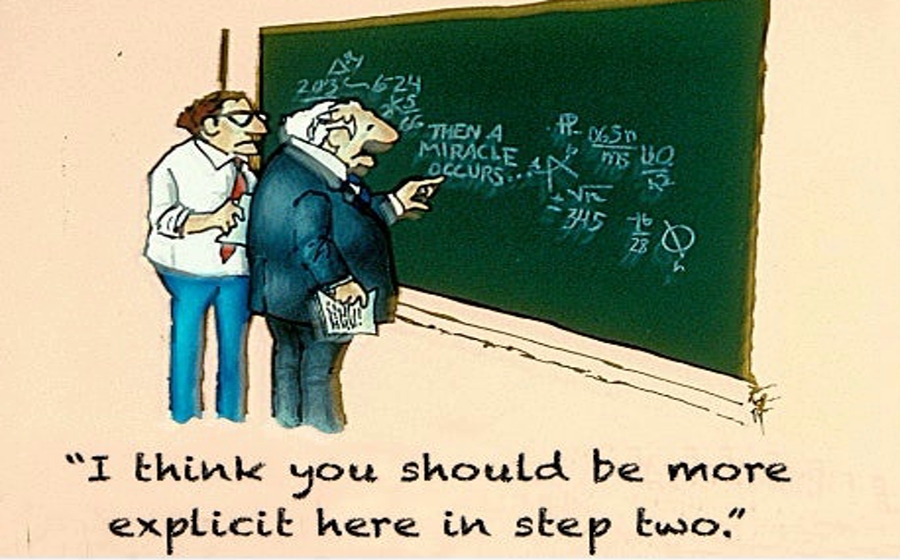
Demonstrating impact using a Theory of Change (ToC) is a methodology that is gaining traction. But what exactly is a ToC and how can you use it for your own project or research? These are questions raised during Avance’s training course, given by impact researcher and consultant Gerla van Breugel for staff at Amsterdam University of Applied Sciences.
Applied research contributes to changes in society. But how do those outcomes of research affect society, what are the long-term effects and how can you make them clear and comprehensible? A Theory of Change describes the change the research, project or organisation seeks to bring about and how it will be achieved, says Van Breugel. There are three key considerations in this respect: the change mindset, the process and a visual representation of that process.
Mindset
Van Breugel uses a ToC from the IMC Weekend School Foundation as an example. This school provides supplementary teaching on Sundays to children living in socio-economically disadvantaged neighbourhoods. The classes are taught by professionals who talk about their work, thus giving the children more information about possible professions to choose. The ultimate aim, the bigger impact of these activities, is for the children to become more successful in the labour market. But how do you achieve that change? Which activities are needed for this? A ToC is a model that describes the intermediate effects, thereby providing a picture of the change path. “Researchers know what they ultimately want to achieve and the activities they will carry out to get there, but explaining exactly how that change comes about is often not possible. It remains a black box. With a ToC, you make those changes transparent by very consciously looking at cause and effect.”
But, as Van Breugel admits, that is a challenge. “I call it advanced puzzling.” Initially, a ToC raises many more questions than it answers and a lot of time and energy goes into it. “You are deciding, one step at a time, what you want to achieve and how you are going to do it. Are the steps logical, are any activities missing, what assumptions are being made and are they correct?” says Van Breugel. In a ToC, you make assumptions explicit, test whether they are correct and whether the other parties in your research project expect the same effects and make the same assumptions. By monitoring the effects resulting from your ToC, you can learn what is or is not working and adjust the research or project activities accordingly, if necessary. In other words, developing a ToC helps to manage the process for impact.
Stakeholders
Above all, you should not make a ToC on your own, says Van Breugel; you need different perspectives. A ToC is a great way to involve stakeholders. What effects do they consider important and what assumptions do they make? It provides a framework, a structure, within which you can bounce questions off each other, frame discussions and make what is implicit explicit, says the course leader. Assumptions are often hidden, so they need to be brought to the surface. During the course, participants work on their research in small groups. A ToC yields new insights, and for some participants this is the eye-opener of the course: making assumptions explicit contributes to a shared vision.
Product
The outcome of a ToC development process is a tangible product: a visual representation. This representation of a ToC has a number of standard components: the different target groups, the different activities and the effects of those activities. Van Breugel presents some examples of ToCs. This raises a number of questions, such as how, as a Centre of Expertise, do you create a ToC? Does it mainly enable other parties to deliver impact? In response, Van Breugel shows a ToC of a fund that enables drop-in centres to make an impact. In this case, it is referred to as enabled impact. Van Breugel emphasises that ToCs come in all shapes and sizes. Sometimes at a very detailed level, sometimes only at an outline level, depending on the complexity of the change, who you are making the ToC for and why. “A ToC is custom-made. When talking about impact, people often assume big changes. Some researchers shy away from that. But changes can have different dimensions,” Van Breugel argues, citing a quote from the Dalai Lama: “If you think you are too small to make a difference, try sleeping with a mosquito”. An intended change can affect a lot of people, but the impact at the individual level may not be so great. Consider, for example, effects on student welfare – wide range (scale), but not so many changes at the individual level. There are also changes with a deep impact. Here, the change at the individual level is substantial though the reach is limited, for example international student scholarships, says Van Breugel. With systemic impact, the change targets an entire system, a radical change with great impact. An example of this is the Study House (Studiehuis).
Once you have developed a Theory of Change, are you done? No, that’s where it begins, says Gerla van Breugel. How things work out in practice can be quite different, depending on the circumstances. “Remember that a first version of a ToC is a hypothetical model. Just like your research, a ToC is a work in progress.”
The Theory of Change introduction course was given by Gerla van Breugel of Avance Impact on 10 and 23 March 2022 and organised by the Doorwerking Praktijkgericht Onderzoek research group in collaboration with IXA-HvA.
